Jodhpur
First stop was the Jaswant Thada Memorial to the Maharajas where they are cremated and then a memorial is built over the ashes.
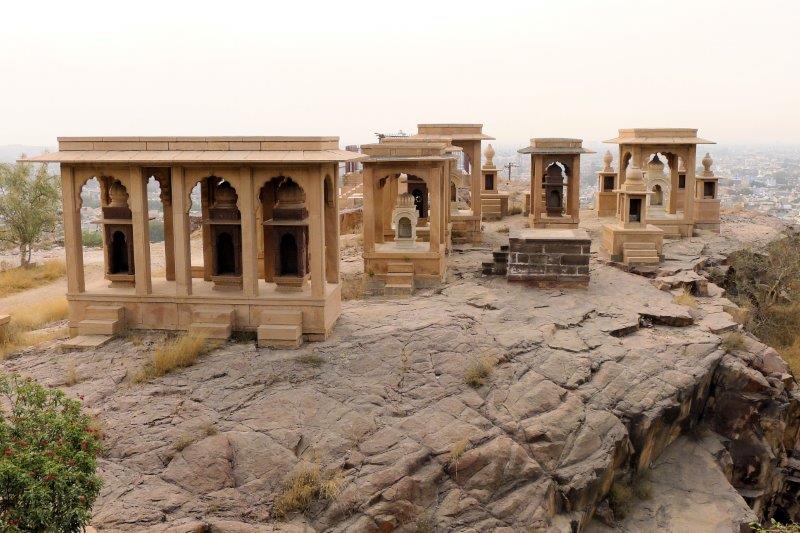
More mausoleums on the same site.
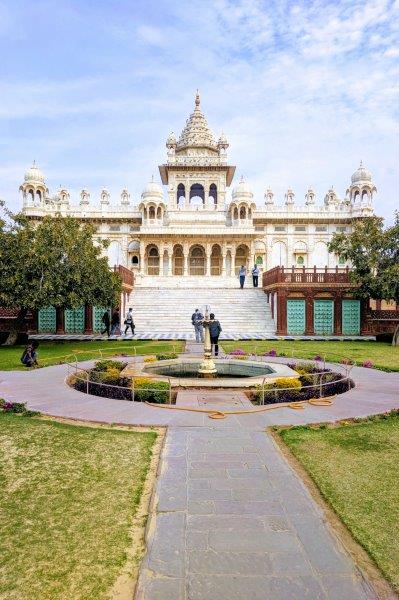
Jaswant Thada. It has translucent marble walls. They are beautiful when the sun shines through them.
Jodhpur has a current maharaja but he has no power. It was all given up in 1971. The maharajahs could keep their land and holdings by paying a tax to the government. This maharajah kept the palace (Now a Taj hotel is on the property.) and deeded the Mehrangarh Fort and other palaces to a trust in the same form as in England. He became King at age 4 and was educated in England so likes the UK form of trusts for national monuments.

Mehrangarh Fort from across the lake. We could walk, take an elephant, or have Sonu take us to the top!

Mehrangarh Fort Jodhpur
After we finished at the fort, we walked down through the blue city – home to Brahmin caste and jewelry smiths, historically – through the temple area, past the public kitchens, bangle market, wholesale spice market and grain markets. We ended up at the clock tower where the clock was built using the same type of mechanism as Big Ben. It was a block from the hotel!
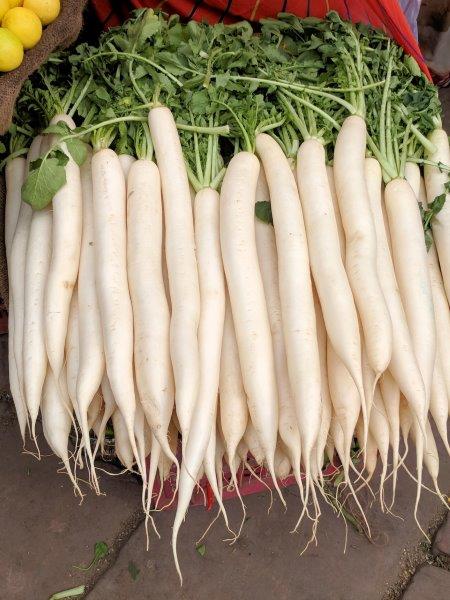
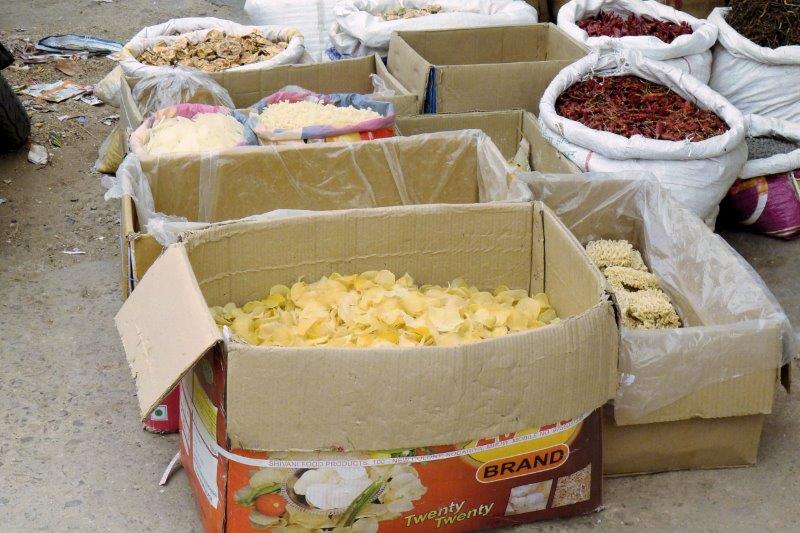
Yes, potato chips can be bought loose. I have no idea what a kilo of these costs. I stuck to finding strange flavors of Lay’s potato chips!

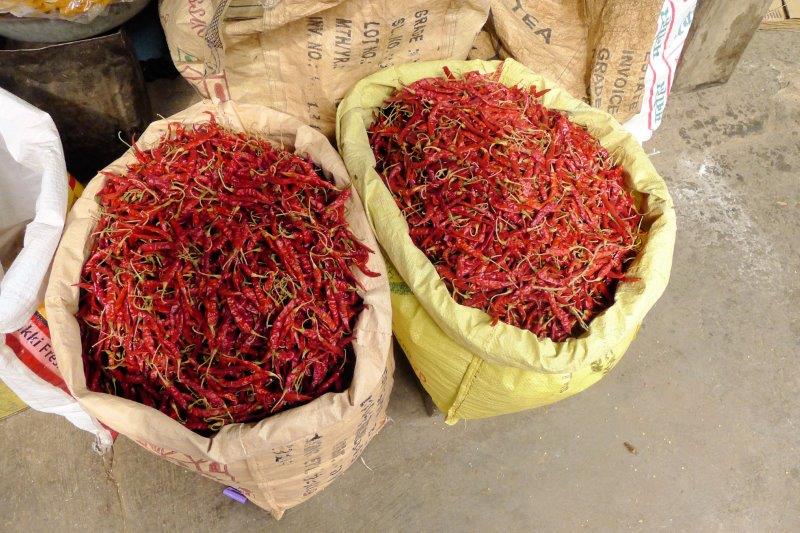
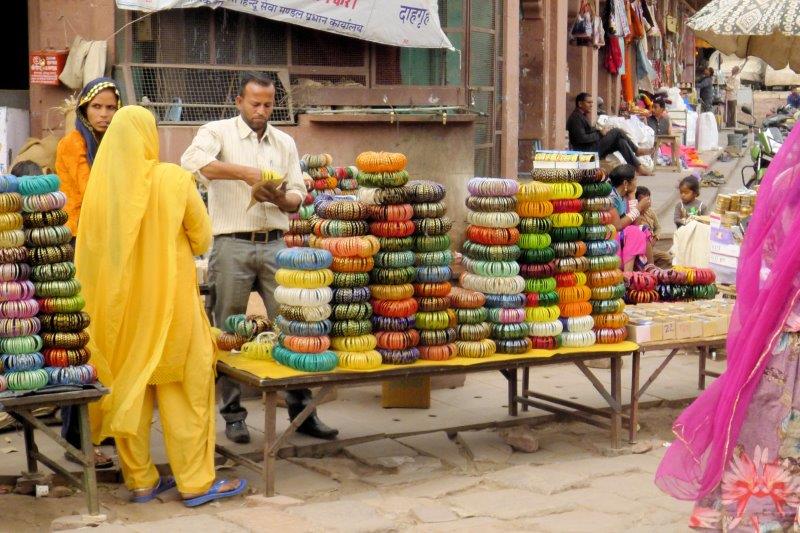
A bangle bracelet vendor. Pick your favorite color!
The country people buy the bangles in wholesale and mark them up a bit, selling them in small quantities. They come to the same location every day to sell them. The sari section sells used saris. The people buy old ones and then resell them here for uses as curtains and other items that need large quantities of fabric.
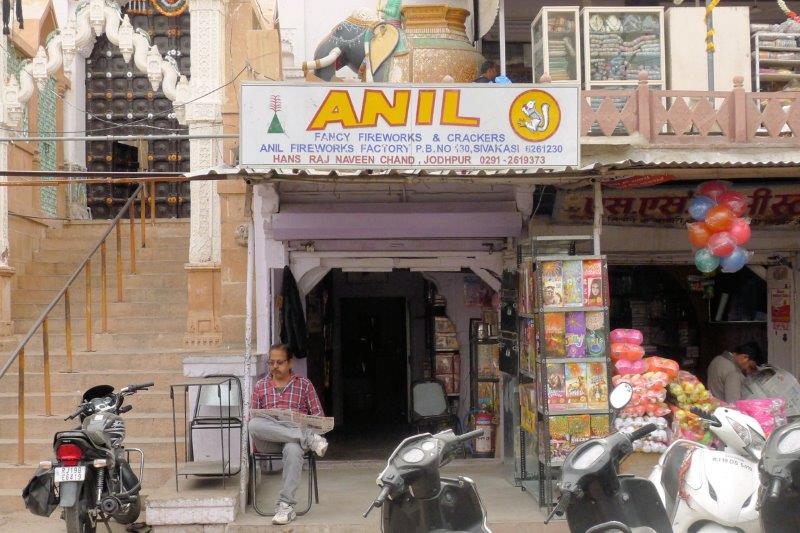
One section of the market had fireworks stands everywhere.
Michael, tour guide, was great! He’s from around Goa and earned a MS in Tourism Mgmt. Told us good info and answered questions about India. He’s Catholic so no long weddings for him but he did have receptions on different days from wedding – one for his veggie friends and one for his non-veggie friends.
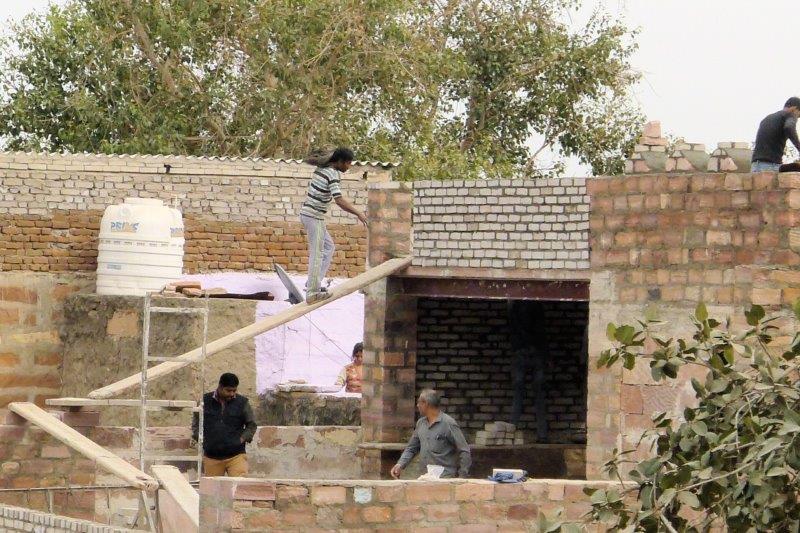
Makeshift scaffolding for carrying bricks and mortar from one level to another.
We watched construction across the street – ramps used from one story to the other to move cement and bricks!
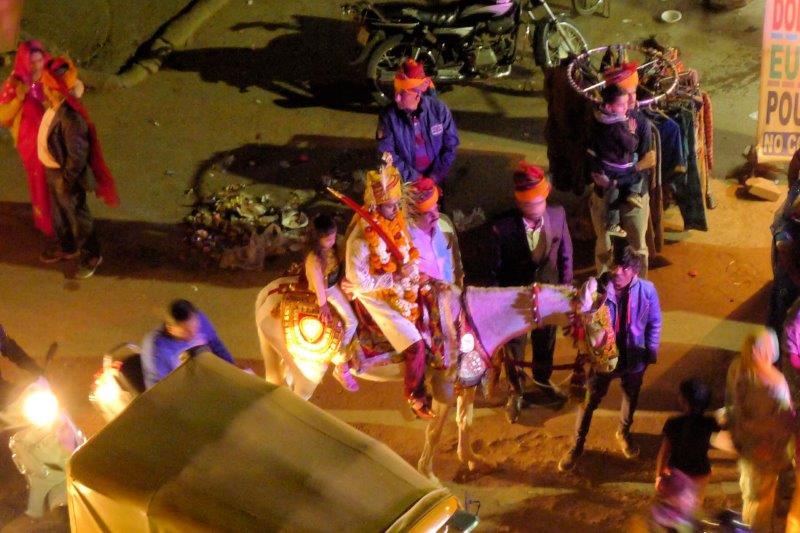
We could see this groom on a horse from the rooftop restaurant where we ate dinner. He was accompanied by friends and a very loud music truck!
A procession for the groom came by the hotel so everyone was watching from the roof. The groom-to-be is on a white horse.
